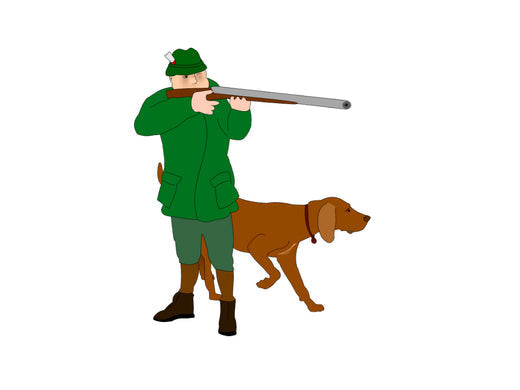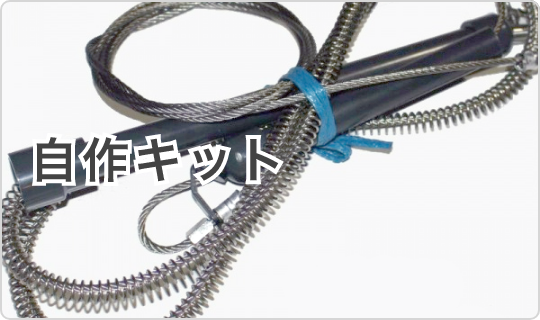After that, the breed of dog first appeared about 15,000 years ago, when humans domesticated wolves and artificially selected* individuals with traits that humans liked. . Therefore, from the perspective of the origin of the species, dogs are thought to have played the role of hunting dogs long before the beginning of agriculture.
*Artificial selection: Refers to the act of artificially selecting the traits of an organism, continuing through generations, and inducing that change in the desired direction, or its results.
This is a bit off topic, but the first time I became aware of the existence of hounds was when I was a kid, I saw a manga called "Ginga -Nagareboshi Gin-" published in Shonen Jump.
It is a story about Gin, a bear dog (hound dog for the purpose of hunting bears), who goes on an adventure in order to avenge Akakabuto, a ferocious cannibal bear that even humans cannot stand against. And it was something that made my chest hot as if I was going to face it with only my fangs.
However, in reality, hunting dogs are good at chasing down prey with their excellent sense of smell and barking, but they are not strong enough to kill large animals.
On the other hand, humans do not have the physical abilities of dogs, but they do have powerful weapons such as guns and knives. Therefore, it can be said that hounds are the best partners for hunters.
type of hound
Hounds are divided into many dog breeds (breeds) and strains, and are roughly divided into bird hunting dogs and animal hunting dogs.types of hunting dogs
In bird hunting, especially pheasant hunting, pointers, setters, retrievers, spaniels, etc., who handle all of them, are active.When a pointer finds prey, it adopts a "hand" posture to inform the hunter of its location (also known as pointing).
Setters are also good at sneaking up on prey to keep it from escaping and, at the hunter's command, driving the bird into the best position for the hunter to fire.
Retrievers are able to memorize and recall the location of birds shot down by sight over a long period of time. In addition, it has a calm temperament and can carry prey without biting it, and can even swim. Therefore, it is good at retrieving prey that has been shot down or escaped with a half-arrow. Spaniels are smart and loyal, and are widely used for bird hunting, but they are also popular as family dogs.types of hunting dogs
In hunting wild boars and other animals, breeds of dogs that are agile, quick-footed, brave, and have the ability to squeal moderately are highly valued. They always keep a certain distance from their prey in pursuit, and bark (chasing) to inform the hunter of the prey's location.
In addition, Japanese dogs have been active in hunting since ancient times, and there are Kishu, Kai, and Akita dogs. Comparing hounds and Japanese dogs, depending on the dog's own personality, hounds tend to bark quickly and loudly, while Japanese dogs tend not to bark until they find prey.
How to chase using a hunting dog
There are many ways to drive down prey with a hound.
For example, in wild boar hunting, ``makigari hunting'' is well known, in which a large number of people surround the hunting grounds where the prey inhabits from all sides and narrow the enclosure to hunt down the prey. Maki-gari is performed by Seko (a hunter whose role is to hunt down the beast and prevent it from escaping), several archers (hunters who fire guns at the prey), and partnered hunting dogs.
*The minimum number of hunters is 3 (2 Seko and 1 archer), and if more than 3 hunters are not expected, the round hunting will be canceled.
First of all, members other than Seko perform “quitting” alone or in groups. Quitting is the task of determining changes in the beast's traces by assigning a specific area to each member, and it is usually done in the morning.
After that, each member gathers at the meeting place, gathers information about quitting with Seko, decides the hunting area, and starts hunting. When the hunt starts, the dog first wakes up the sleeping wild boar by "floor barking".
Floor barking is very loud barking in the same position. When the boar wakes up and runs away, the dog barks loudly while chasing it.
Awakened wild boars escape through 'commutes' (paths that wild boars always take when moving to feeding grounds and roosts).
While chasing the wild boar, Seko instructs the archers to wait areas (machi), as well as infers the whereabouts of the prey from the field signs in the mountains and the search conditions of the hunting dogs, and cooperates with the archers as needed. The shooter puts up a gusset where the wild boar is likely to escape, and shoots the escaping wild boar with a gun.
In addition to round-hunting, hunting dogs are also used to drive in prey. Dogs track the odor of wild boars. There is also ``bed hunting (floor hunting),'' in which a dog chases and barks until the hunter comes.
Precautions for hunting with hounds
Hunting birds and beasts cannot be captured only by having dogs bite them. In addition, it is not possible to stop the movement of hunting birds and beasts by having a dog bite them, and to capture them outside of the legal hunting law. Both are prohibited by law ( reference page ).
In addition, it is important for the owner to understand well the strengths and weaknesses in advance, as the personality of each dog breed and individual is naturally different.
For example, when hunting in a group, hounds are particularly good at raising wild boars, not leaving them behind, and continuing to squeal. On the other hand, the advantage of Japanese dogs is that they tend to return home.
For example, when hounds go into tracking mode, they chase their prey far away and sometimes do not return even after the sun goes down, but Japanese dogs return quickly and return to their owners within a few hours. For this reason, many Japanese veteran hunters prefer Japanese dogs.
I think there are various opinions, but for example, in group hunting such as mound hunting, it is okay for the mountains to be noisy, and because it is possible to spare a lot of manpower to retrieve dogs, hounds with high tracking ability are recommended. It might be better to use On the other hand, if you are not hunting in a group, especially for bed hunting, a Japanese dog may be more suitable.
In any case, hunting dogs are great partners for successful hunting, and hunting with dogs is a very profound hunting method. If you're a hunter, wouldn't it be a good idea to take a step into the world of this long history of hunting?
However, it is necessary to take sufficient safety measures so that they do not attack people or domesticated animals, and to observe good manners.

 箱罠
箱罠
 くくり罠
くくり罠
 パーツ類
パーツ類
 電気柵
電気柵
 自作キット
自作キット
 防獣グッズ
防獣グッズ
 監視カメラ
監視カメラ




 box trap
box trap
 tying trap
tying trap
 enclosure trap
enclosure trap
 Prevention and avoidance goods
Prevention and avoidance goods
 electric fence
electric fence
 trap surveillance camera
trap surveillance camera
 transportation goods
transportation goods
 Trap detection sensor
Trap detection sensor
 hunting supplies
hunting supplies
 hunting books
hunting books
 Anti-bird goods
Anti-bird goods
 Agricultural materials/machinery
Agricultural materials/machinery
 boar
boar
 deer
deer
 Kyon
Kyon
 monkey
monkey
 raccoon
raccoon
 Badger
Badger
 palm civet
palm civet
 raccoon dog
raccoon dog
 nutria
nutria
 mouse or rat
mouse or rat
 Mole
Mole
 bear
bear
 pigeon
pigeon
 Crow
Crow







